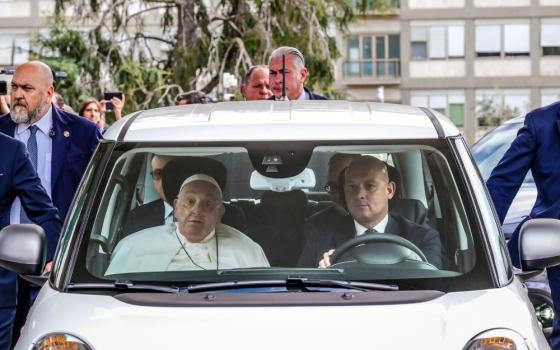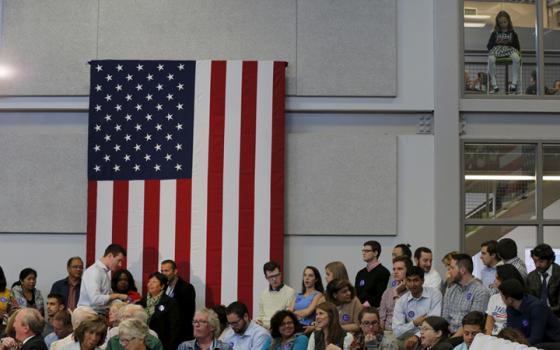By JOHN L. ALLEN JR.
Fatima, Portugal
Try as he might to insist that a tight focus on the details of the Fatima revelations is a prescription for mischief, Pope Benedict XVI’s visit to the world’s most celebrated Marian shrine inevitably evokes the undercurrent of secrets and cosmic mysteries long associated with the reported appearances of Mary to three shepherd children between May and October 1917.
That body of lore includes, most famously, the “three secrets” of Fatima:
•tA vision of Hell and world wars;
•tA request for the consecration of Russia to the Immaculate Heart of Mary;
•tA vision of a bishop in white slain by bullets and arrows, often taken to be a prediction of the 1981 assassination attempt against Pope John Paul II.
Debate continues to swirl in Fatima circles as to whether the Vatican ever complied with the request to consecrate Russia, even though two popes – Pius XII and John Paul II – claimed to have done so. Some Fatima devotees, however, argued that the consecrations were inadequate, either because they lumped Russia in with the rest of the world or because they weren’t carried out in concert with all the bishops of the church.
Sr. Lúcia Santos, the only seer of Fatima to have survived the influenza epidemic that gripped Europe in 1918, formally asserted in 1984 that John Paul’s act of consecration was sufficient, but that too failed to convince some devotees. In terms of subsequent history, both sides can claim vindication: Communism did fall in 1989, five years after John Paul’s consecration. On the other hand, the Fatima revelation predicted the conversion of Russia would herald an era of world peace, which obviously has yet to arrive.
An object of intense speculation for decades, the text of the third secret of Fatima was finally unveiled by the Vatican in May 2000. Once again, Sr. Lúcia, who died in 2005, confirmed that it was legitimate – and once again, some devotees weren’t persuaded. In part that’s based on an undercurrent of belief over the years in Fatima circles that the third secret dealt with the internal difficulties of the Catholic church in the post-Vatican II era, perhaps including language about a “great apostasy” in Rome.
Cardinal Tarcisio Bertone, now the Vatican’s Secretary of State, played a lead role in publication of the third secret in 2000 as the top deputy of then-Cardinal Joseph Ratzinger in the Congregation for the Doctrine of the Faith. In 2007, Bertone published a book with Italian journalist Giuseppe De Carli titled The Last Secret of Fatima, in which Bertone called claims that the third secret talks about apostasy in the church “absolutely crazy.”
Theories that the Vatican suppressed part of the third secret for fear of its consequences, Bertone said, “is actually the sort of device the Masons used to invent to discredit the church.”
Also associated with the mysteries of Fatima was John Paul’s recovery from the 1981 assassination attempt, when Mehmet Ali Agca fired upon the pope in St. Peter’s Square. That attack fell on May 13, 1981, the feast of Our Lady of Fatima, and John Paul was convinced that the Virgin Mary intervened to save his life. One year after the attempt, John Paul traveled to Fatima to place the bullet doctors removed from his body in the crown of the statue of Our Lady of Fatima.
Benedict XVI will recall that act of devotion in his prayer tonight, expressing gratitude that Mary is crowned “not only with the silver and gold of our joys and hopes, but also the ‘bullet’ of our worries and suffering.”
On the papal plane en route to Portugal yesterday, Benedict XVI gently distanced himself from exacting exegesis of the Fatima visions – suggesting that patience and time are needed to fully understand the visions, which are initially expressed in a typically limited human fashion.
“There is a supernatural impulse which doesn’t come simply from someone’s imagination but from the supernatural reality of the Virgin Mary,” the pope said. “That impulse enters into a subject, and is expressed according to the possibilities of the subject, who is determined by his or her historic situation. The supernatural impulse is translated, so to speak, according to the subject’s possibilities for imagining it and expressing it.”
“In this expression formed by the subject, there are always hidden possibilities to go beyond, to go deeper,” he said. “Only with time can we see all the depth which was, so to speak, dressed in this vision, which was possible for the concrete person.”
Benedict, in other words, seems more interested in Fatima’s spirit than its secrets – all part of his “Marian Cool.” For him, the significance of Fatima is as a reminder of Mary’s maternal love for humanity, and her role of introducing the world to Christ. Even in comparison to John Paul II, Benedict XVI seems tempermentally less inclined to stress the mystical dimension of Fatima, preferring to place the accent on its theological and spiritual importance.
It remains to be seen whether Marian Cool will be enough to turn down some of the heat that has long kept Fatima boiling in the Catholic imagination.




